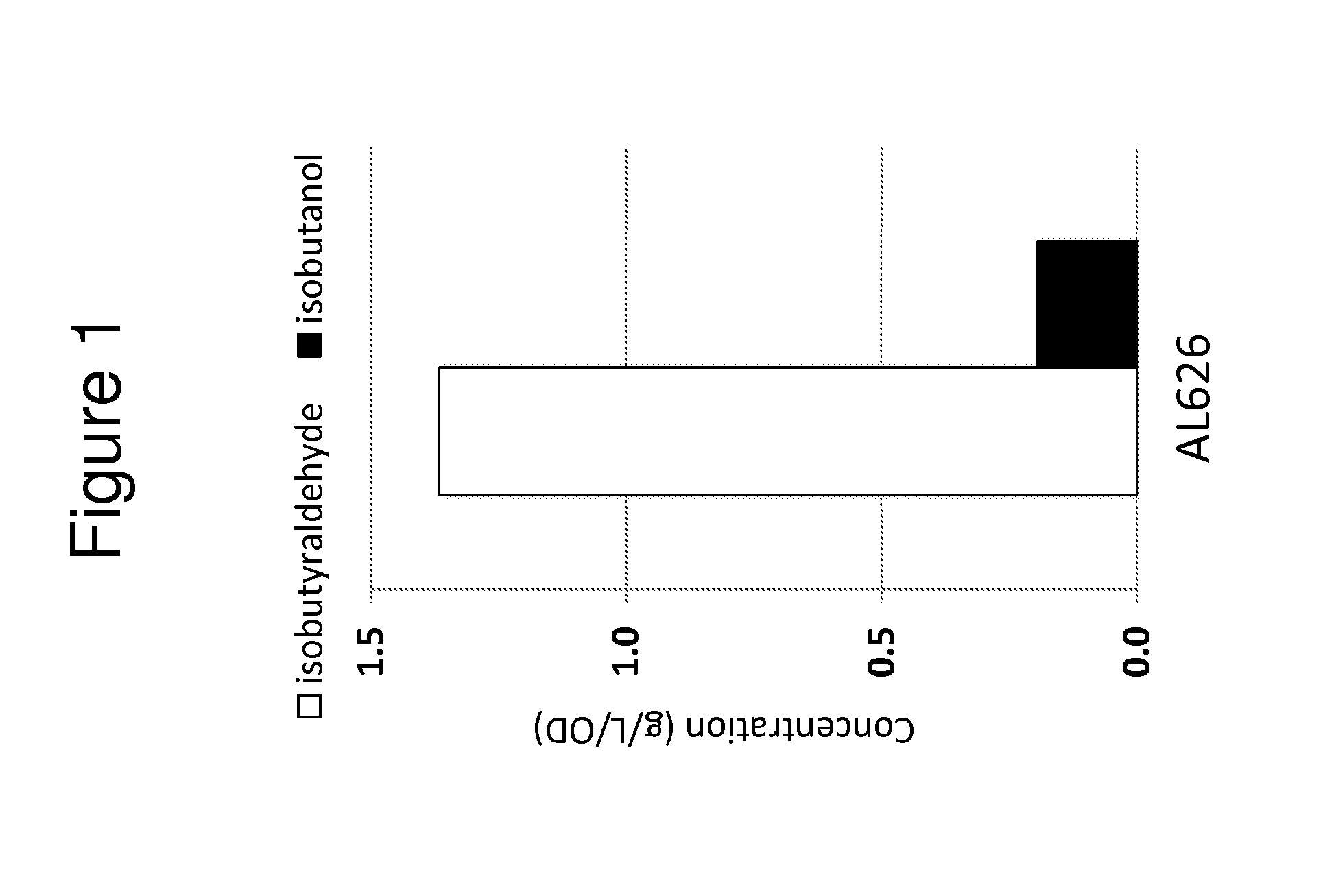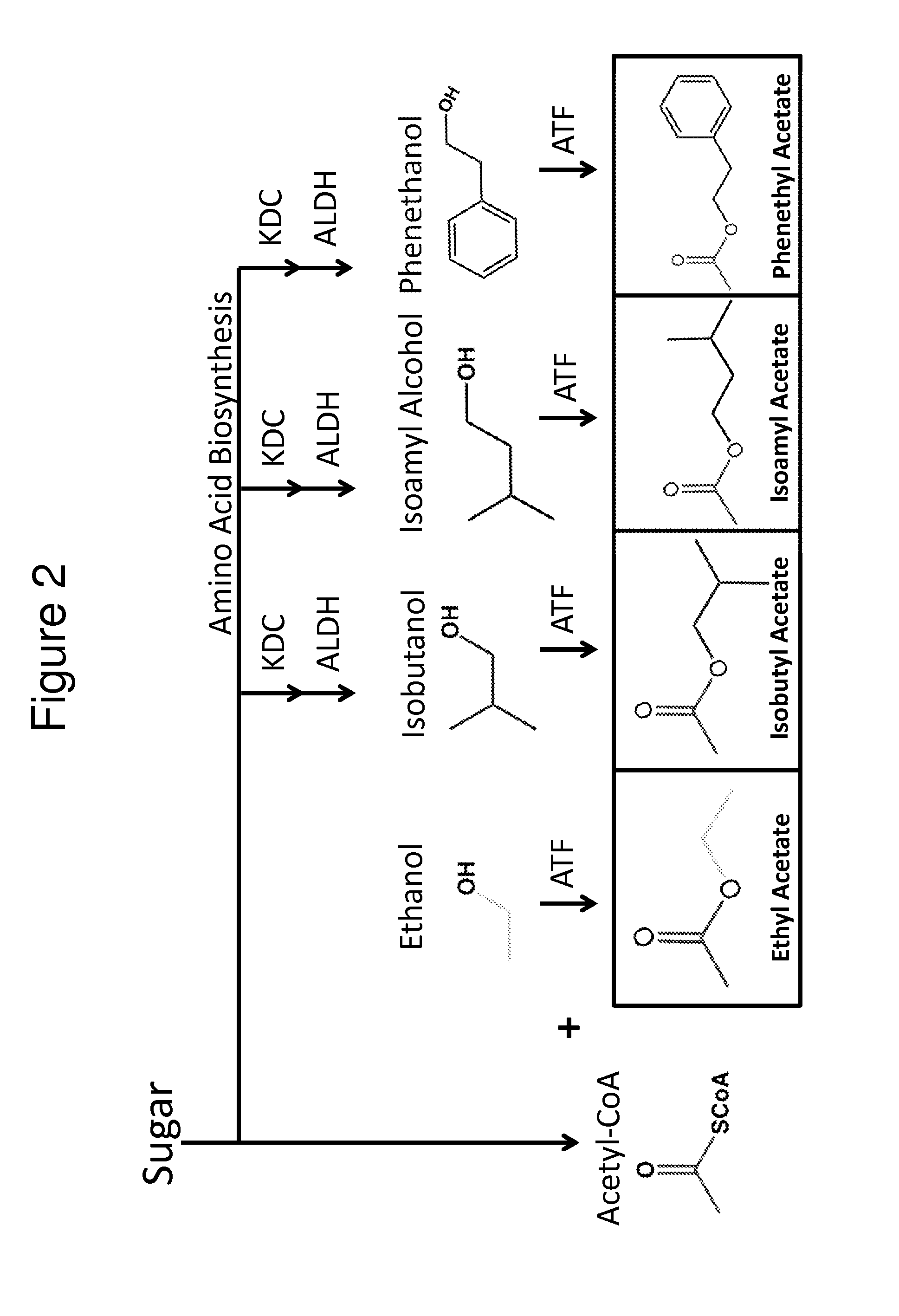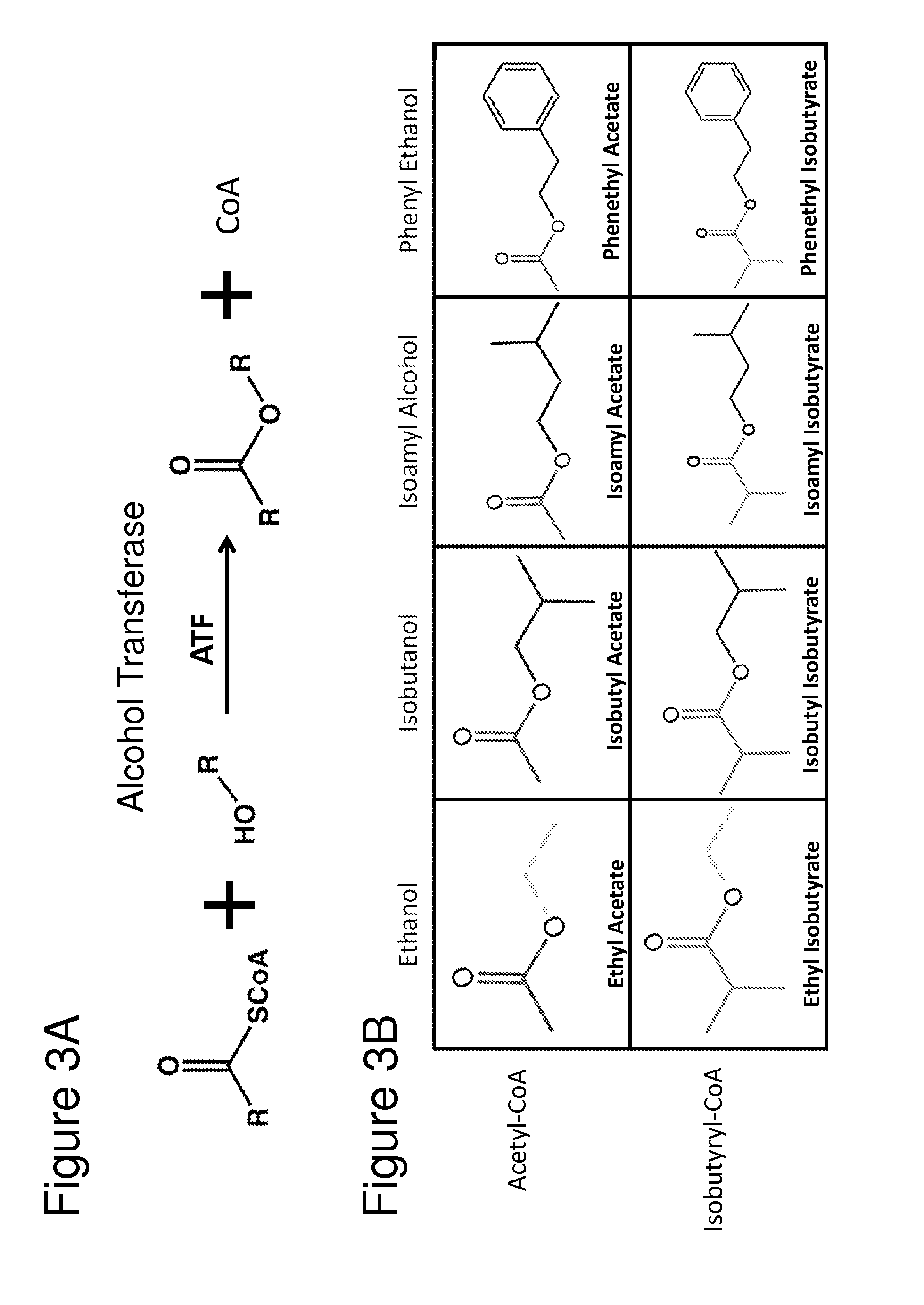Bacteria engineered for ester production
a technology of ester and bacteria, which is applied in the direction of lyases, transferases, carbon-carbon lyases, etc., to achieve the effect of increasing the production of ester
- Summary
- Abstract
- Description
- Claims
- Application Information
AI Technical Summary
Benefits of technology
Problems solved by technology
Method used
Image
Examples
example 1
Engineering Bacteria to Produce Isobutyraldehyde
[0127]Wild type E. coli and other bacteria cannot produce isobutanol or its precursor isobutyraldehyde because they lack the 2-keto-acid decarboxylase (KDC) that converts 2-keto-isovalerate to isobutyraldehyde. When kivd, a KDC from L. lactis, was overexpressed in E. coli together with the valine biosynthesis genes, including alsS (B. subtilis), ilvC (E. coli) and ilvD (E. coli), significant amounts of isobutanol were produced. Overexpression of the valine biosynthesis genes was not necessary for isobutanol production but it amplified the endogenous pathway and promoted the efficient conversion of a carbon source to 2-keto-isovalerate. To optimize production of isobutanol, the E. coli strain JCL260 was used as the production host. This strain has deletions in fnr, ldhA, frdBC, pflB, pta, all of which are genes involved in byproduct formation. JCL260 also has a deletion in adhE, one of E. coli's six ADH genes. The other five ADH genes a...
example 2
Engineering Bacteria to Produce Esters
[0129]The previous example demonstrated the construction of bacterial strains that produce high amounts of various alcohols and high amounts of isobutyraldehyde (e.g., AL626). In order to significantly expand the biosynthetic repertoire of these bacteria, further genetic manipulations were undertaken to allow bacteria to produce esters through fermentation (FIG. 2). Expression of an aldehyde dehydrogenase (ALDH) and a 2-keto-acid decarboxylase (KDC) led to the formation of several branched chain alcohols, including isobutanol, isoamyl alcohol, and phenethanol, from compounds derived from amino acid biosynthesis (FIG. 2). ATF1 catalyzes the formation of esters from constituent acid-CoA thioesters and alcohols (FIG. 3A). ATF1 was co-expressed in a bacterial strain along with ALDH and KDC to convert these branched chain alcohols into their corresponding acetate esters (FIG. 2).
[0130]Aldehyde dehydrogenase activity catalyzes the conversion of an ald...
example 3
Developing Biological Routes to Acetate Esters in Bacteria
[0136]As described above in the previous Examples, using acetyl-CoA, a variety of acetate esters can be made in combination with alcohol production pathways. Several alcohols (e.g., ethanol, isopropanol, isobutanol, 1-butanol) have been produced in high yield and titer (see, e.g., Atsumi et al. Nature 451:86-9, 2008; Shen et al. Appl. Environ. Microbiol. 77:2905-15, 2011; Bond-Watts et al. Nat. Chem. Biol. 7:222-7, 2011; and Inokuma et al. J. Biosci. Bioeng. 110:696-701, 2010), in principle allowing for similar yields of esters using a suitable ATF (FIG. 9a-b). Since wild type E. coli is only naturally capable of generating a single alcohol, ethanol, a minimal platform was developed to generate several alcohols as a means to evaluate the potential of acetate ester production. E. coli strain JCL260 (ΔadhE Δfrd ΔldhA Δpta ΔpflB Δfnr) (Atsumi et al. Nature 451:86-9, 2008) was used as a production host, which lacks all major ferm...
PUM
| Property | Measurement | Unit |
|---|---|---|
| Acidity | aaaaa | aaaaa |
Abstract
Description
Claims
Application Information
 Login to View More
Login to View More - R&D
- Intellectual Property
- Life Sciences
- Materials
- Tech Scout
- Unparalleled Data Quality
- Higher Quality Content
- 60% Fewer Hallucinations
Browse by: Latest US Patents, China's latest patents, Technical Efficacy Thesaurus, Application Domain, Technology Topic, Popular Technical Reports.
© 2025 PatSnap. All rights reserved.Legal|Privacy policy|Modern Slavery Act Transparency Statement|Sitemap|About US| Contact US: help@patsnap.com



